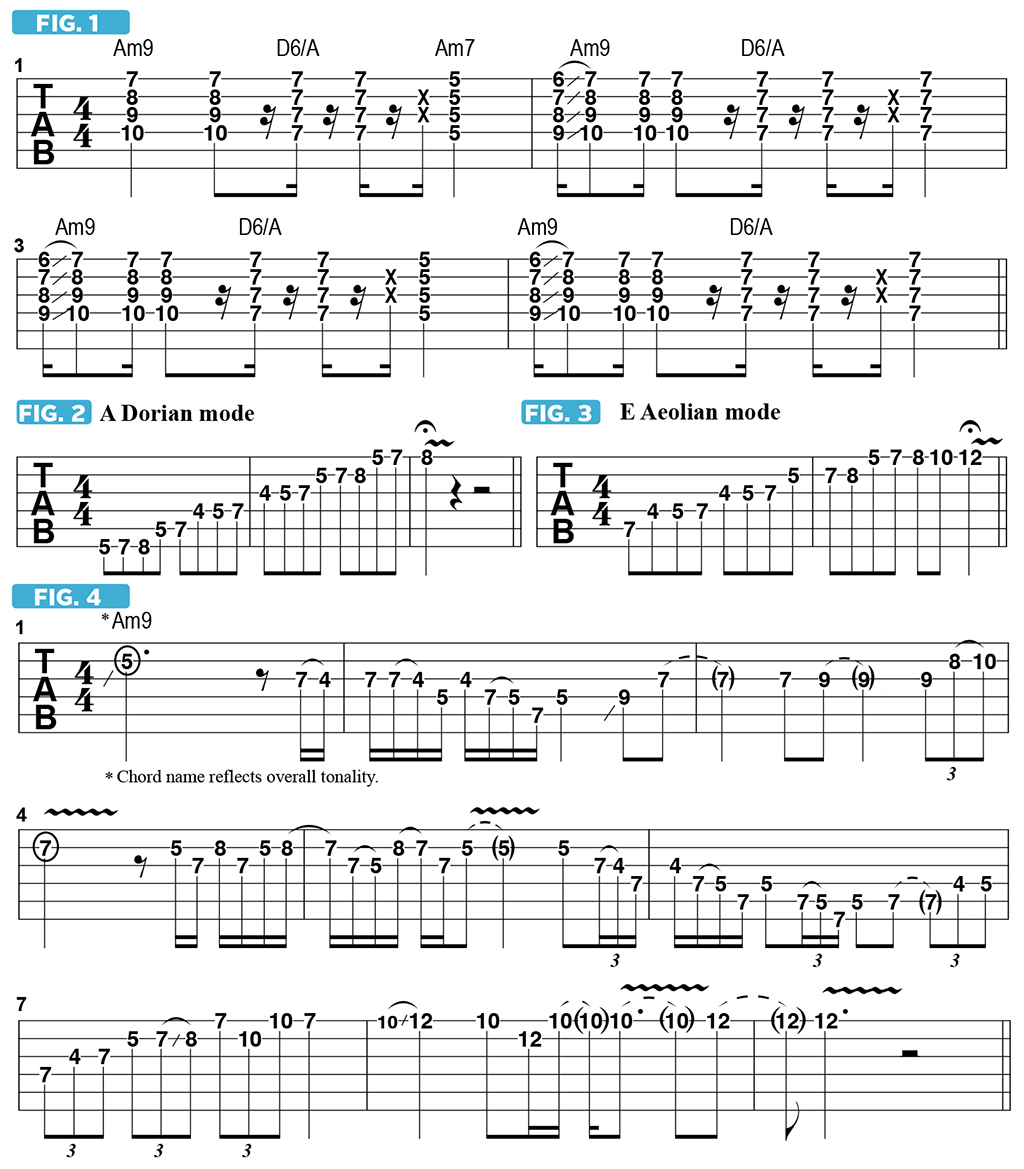Playing Five-Chord Licks Over the One
Craft unexpected and unusual melodies by superimposing five chord licks over the one chord.
Last month, we looked at ways to craft unexpected and unusual melodies by superimposing four chord licks over the one chord. As you recall, the four chord is found by locating a major scale’s fourth scale degree, and, based on the key of the song, the four chord will in most cases either be a major seven, minor seven or dominant seven. For example, in the key of G major, the fourth note of the G major scale (G A B C D E F#) is C, so the four chord is Cmaj7 (C E G B), which can be reduced to its triadic form, C (C E G), by eliminating the seventh of the chord, B. Likewise, the five chord in the key of G major is built from that scale’s fifth degree, D, which forms the basis of a D7 chord (D F# A C) or D major triad (D F# A).
Our point of reference last month was the classic Allman Brothers Band song “Whipping Post,” the solo section to which is played in the key of A Dorian minor (A B C D E F# G), based on the two chord of G major, as opposed to the more standard relative minor key of E minor, which is based on the sixth degree of the G major scale. For our purposes today, the superimposed five-chord licks over A minor will be based on Em (E G B), or Em7 (E G B D), as E is the fifth scale degree of A Dorian minor.
The members of the Allman Brothers Band were all influenced by the modal jazz sounds of John Coltrane and Miles Davis, and on songs like “Whipping Post” and “In Memory of Elizabeth Reed,” guitarists Dickey Betts and Duane Allman would often superimpose other, related chordal sounds (via arpeggio-based melodies) over the foundational A minor tonality, in order to emulate that jazz-like approach. FIGURE 1 illustrates a basic rhythm pattern along the lines of that heard in “In Memory of Elizabeth Reed.” While remaining over a static A Dorian minor tonal center, the chords move from Am9 to D6/A (or Bm7/A) to Am7, followed by Am9 to D6/A (or Bm7/A).

The appropriate mode to play over this progression is A Dorian, illustrated in FIGURE 2. The fifth scale degree of A Dorian is E, so we can identify the scale pattern built from the fifth by starting on E and adhering to the same note set in the formation of E Aeolian (E F# G A B C D), as shown in FIGURE 3.
When soloing over an A Dorian-based progression or rhythm pattern, it sounds fine to simply play A minor-type licks, utilizing such scales as A Dorian, A minor pentatonic (A C D E G) or A blues (A C D Eb E G). But an alternative and sometimes more adventurous approach is to think “E Aeolian” and play Em-type licks, in an effort to achieve a “five-on-one” sound and create a polytonal “pull” toward the five.
FIGURE 4 presents a nine-bar solo, as played over this “Liz Reed”-style chord progression. In bars 1 and 2, phrases are built around the notes of an Em7 arpeggio. Bars 3-5 pull the harmony back to A Dorian, and bars 6-9 revert back to Em-type lines.
Now that you have the concept, try improvising some original phrases built around the fifth over this progression, then experiment with this same kind of arpeggio-superimposition approach with other tonalities and modalities.
Guitar World Associate Editor Andy Aledort is recognized worldwide for his vast contributions to guitar instruction, via his many best-selling instructional DVDs, transcription books and online lessons.
Get The Pick Newsletter
All the latest guitar news, interviews, lessons, reviews, deals and more, direct to your inbox!
Guitar World Associate Editor Andy Aledort is recognized worldwide for his vast contributions to guitar instruction, via his many best-selling instructional DVDs, transcription books and online lessons. Andy is a regular contributor to Guitar World and Truefire, and has toured with Dickey Betts of the Allman Brothers, as well as participating in several Jimi Hendrix Tribute Tours.








![Joe Bonamassa [left] wears a deep blue suit and polka-dotted shirt and plays his green refin Strat; the late Irish blues legend Rory Gallagher [right] screams and inflicts some punishment on his heavily worn number one Stratocaster.](https://cdn.mos.cms.futurecdn.net/cw28h7UBcTVfTLs7p7eiLe.jpg)


